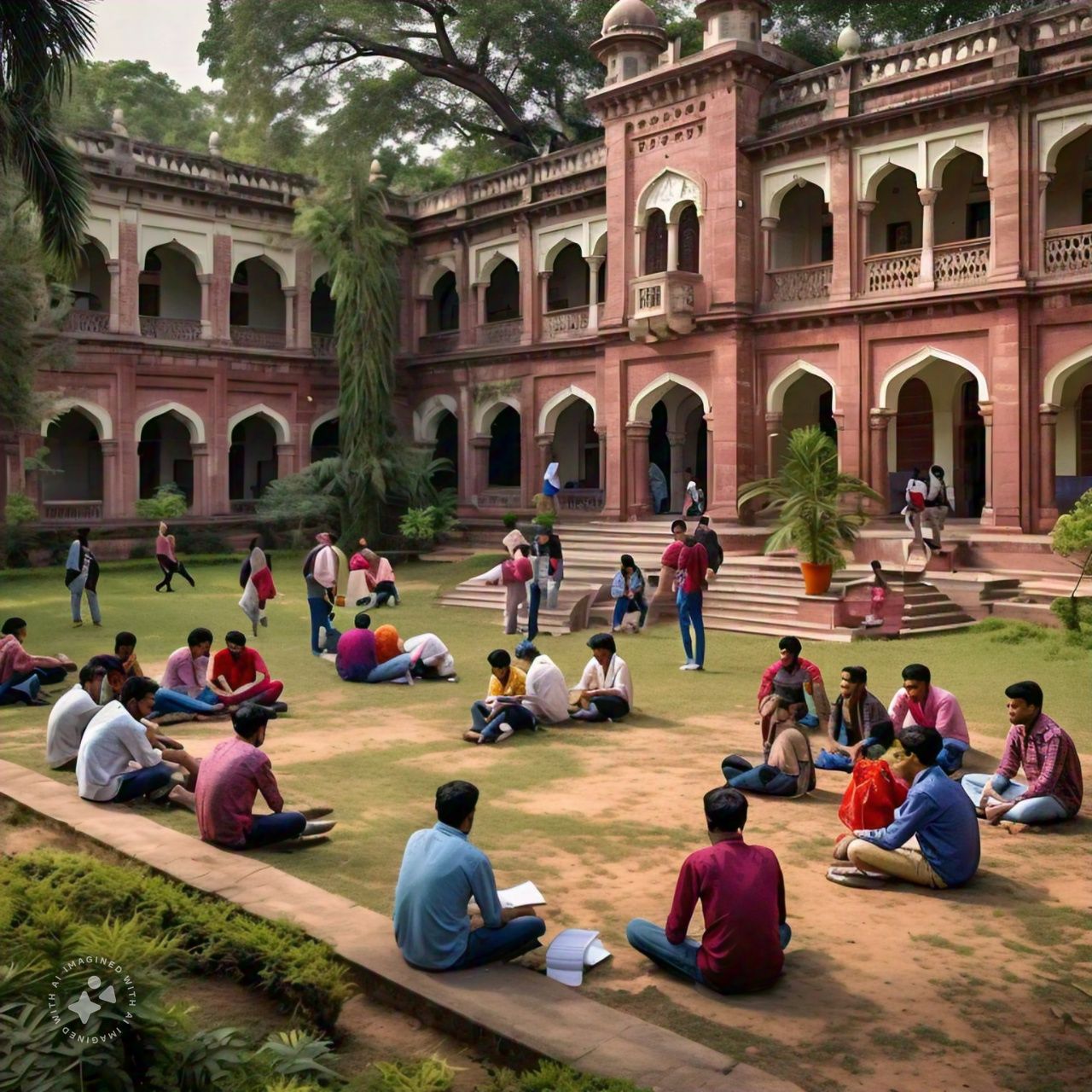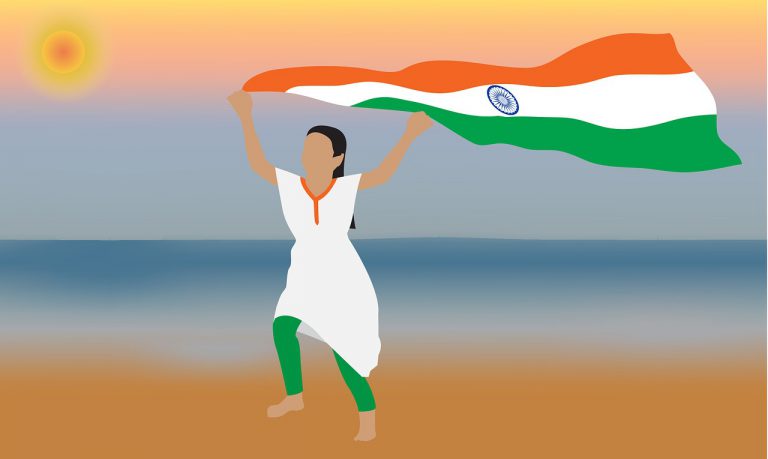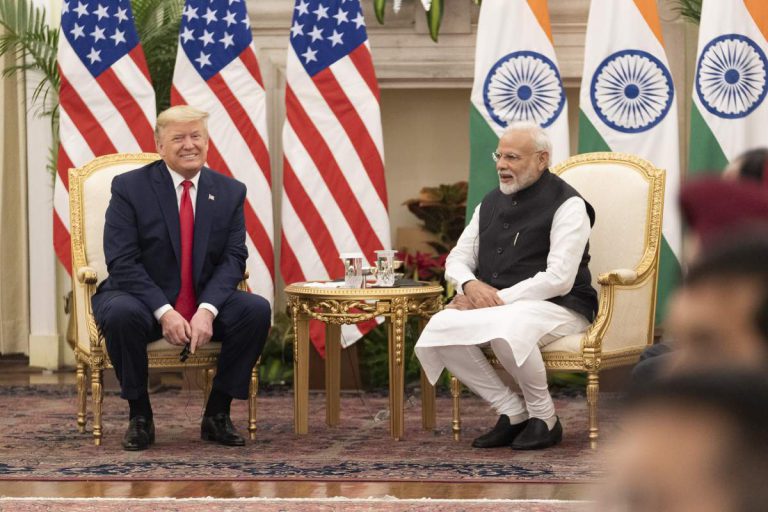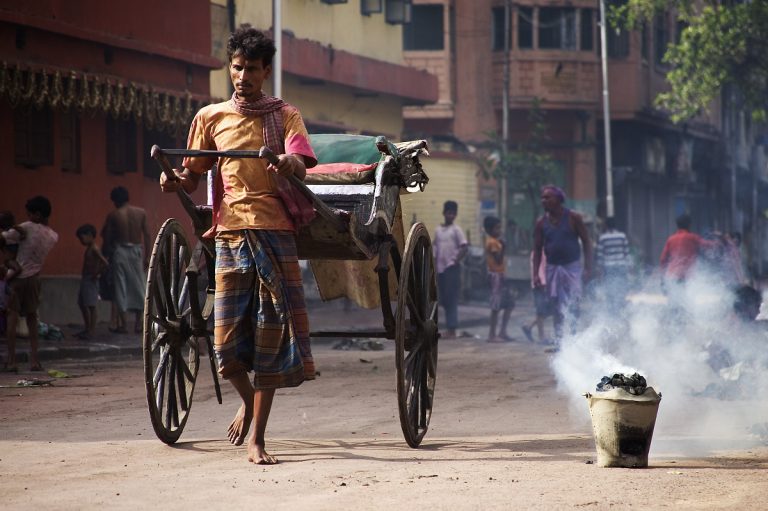The parochial Indian campus
Anuraag is a ‘Contributing Writer’ at the journal.
To dispel any attacks upon the author of indulging in jargon and for the benefit of the readers, I would like to begin with the definition of the word ‘parochial’ mentioned in the title.
Parochialism refers to the mindset and outlook which is solely focused on one’s own social group or political affiliation be it caste, religion, ethnicity, city, and state− an outlook narrow and confined in its perspective. Parochialism prevents any form of engagement with a group or individual belonging to a social group or affiliation other than our own. Such an attitude is fuelled not only by ignorance and xenophobia, but most importantly by a false sense of superiority or exclusivity of one’s own group over others. This generates a sense of apathy towards the need to know and explore others’ cultures or societies and hence, as a result the parochial person remains narrow and limited in his thoughts and perspectives.
With that said, let me begin by how I first came across the term ‘parochial.’ It was in an opinion piece titled ‘The Parochial Indian’ published in The Hindu on 25 April, 2015[i]. The piece was written in the background of the burst of ethnic conflict and sub-nationalism back then in Dimapur, and in Maharashtra and Tamil Nadu. The author laments the eruption of such conflicts and most importantly the underlying parochialism and wilful ignorance of other communities of the same country which trigger riots. Such parochialism and wilful ignorance were also seen in ‘harmless’ humdrum instances such as racist jokes cracked on others as well as the stereotypical portrayals of communities, especially South Indians[ii] and North- Easterners[iii] in Bollywood. Further in the piece, the author pertinently raises the question− When communities do not find it fit to mingle with each other socially, what kind of nation are we talking about?
My second introduction to parochialism was through a high-profile incident in Bollywood that generated much controversy. After the demise of Lata Mangeshkar on 6 February 2022, actors, and celebrities from across the spectrum of Indian film industry had arrived in Shivaji Park, Mumbai to pay their last respects to the legendary singer. Among them was Shahrukh Khan, who removed his facial mask (given the COVID regulations back then) and after saying a short prayer, blew air from his mouth towards the deceased. The act of Shahrukh is a common Islamic practice known as dua which involves blowing air after reciting verses from the Quran to protect the departed from evil influence. However, the blowing was mistakenly interpreted as the actor having spat on the body thereby showing huge disrespect. This caused a huge storm in social media with trolls spewing vitriol on Shahrukh, targeting his religious identity while fact checkers and Muslim users defended the action and clarified the meaning and significance behind it. This controversy led popular writer Shobhaa Dee to pen an op-ed in Times of India (TOI) stating how this incident highlighted the glaring ignorance Indians have of each other’s customs and culture despite belonging to the same country and nation. To my utter surprise, the first comment on the article (by a troll) was as follows− We have no interest or need to understand the barbaric customs of outsiders and invaders (referring to Sharukh Khan and Indian Muslims). Keep your advice to your own self (These might not be the exact words but something on similar lines). This instance not only proves that the average Indian is parochial but also forces to think upon the question asked in The Hindu piece in 2015 − are we really a nation if we do not know our own fellow citizens?
Despite the pervasiveness of parochialism which was manifested in riots in Balasore, Odisha on the festival of Bakr Eid[iv] this year and several other instances over the years, the aim of this piece is not any academic or sociological-ontological examination of the above phenomenon. Instead, it is a personal account of parochialism which I have witnessed and continue to witness in my on-going academic journey spanning three campuses and the resultant observations.

Since time immemorial, universities have been the sites of not only intellectual fervour, but also diversity and cosmopolitanism. One just needs to look at the legacy of the historic Nalanda University in Bihar[v] which attracted scholars from as far as China, Tibet, and Central Asian steppes. Coming to the present times, Indian universities are among the few places where one is faced with the length and breadth of India’s diversity in terms of caste, religion, ethnicity, language, culinary habits and even ideologies. However, the same diversity has led to accusations of the Indian campus becoming sites of discrimination[vi]; if not inside the classroom, then in spaces of common interaction such as the hostel and mess[vii]. Hence, the space of the university campus which was supposed to become the site of celebration of diversity and pluralism has instead degraded into hotbeds of parochialism.
My first experience with diversity happened during my undergraduate days in Tata Institute of Social Sciences (TISS) Guwahati during the period 2015-18. With regard to my school days in Don Bosco Guwahati− situated in the North-East/ Far East of India of 2000s, it was not marked by the cosmopolitanism of Delhi and Mumbai schools back then. Hence, my classmates were confined to localites like my own self with a few sprinklings of Bengalis and Marwaris born in Assam. My undergraduate class could be described as ‘India in miniature’ with students hailing from locations as diverse as Arunachal Pradesh, Imphal, Mokokchung (Nagaland), Sambalpur (Odisha), Kolkata to Darjeeling, Begusarai (Bihar) and Kochi. Not to mention students from my own state of Assam, especially Guwahati where the campus itself was located. From the first day of the semester itself, I began soaking up the diversity as I tried to speak with almost all my classmates except my own fellow statesmen (Assamese) and was even greeted with surprise when Madhab* Chakma from Tripura came over on his own to extend the hand of friendship and expressed his desire to know about Assam and its culture.
However, as the days passed, it became clear to even the juniors that our batch had started coalescing around three broad factions− United Northeastern (NE) Tribals (members share Austro- Mongoloid physical features from all the eight states. In the case of Assam, only limited to the tribal communities, not ones like myself with ‘Aryan’ features), the Guwahati PUNKS (the non- tribal Assamese, but mostly composed of the proud localite students) and the ‘Rest’ (those from beyond the Chicken’s Neck/ Siliguri Corridor− a motley group of Bengali, Bihari, Odia, and Malayali). Regarding myself, still having faith in the motto of ‘unity in diversity,’ although I hung out mostly with the ‘Rest,’ I did try to engage with members of the other two factions. Yet, my overtures went mostly ignored or did not generate any enthusiasm among the ‘Tribals.’
As an example, once I had invited my classmate Mark* from Manipur to hang out with me the coming Sunday. He politely refused, saying that he was not the sort of person to leave his cozy hostel room. A few days later, I see photos of him hanging out with his own tribesmen or other ‘tribals’ from our senior batches late at night. Initially, I was taken aback but later I realised that members of Tribal group like Mark ‘felt safe’ only among their own fellow ‘Austro Mongoloid brethren.’ They felt no connection with the ‘Plains people’ (inhabiting the Brahmaputra Valley/ non tribal Assamese) like us. This alienation extended also to those from across the Chicken’s Neck. It should also be acknowledged that incidents of racist attacks on NE tribal individuals in metropoles like Delhi and Pune[viii] are a major reason behind such apprehension and feeling of safety in groups. But the forming of Tribal ghettoes against non- Tribals is not the solution which leaves both sides alienated and ignorant of each other.
As the semesters went by, the parochialism in the campus took ugly forms. Rumours poured in of a spat between a Bengali classmate of ours and some seniors from NE in which the latter had supposedly remarked to our classmate to stay in his limits as he was in ‘their territory (North East).’ While it was hard for me to believe the above anecdote, yet the experience of my classmate Tanu* from Uttar Pradesh in the TISS Girls’ Hostel compelled me to think otherwise. Hailing from a vegetarian Marwari background, she was not comfortable with her roommates (NE tribals) cooking meat (including pork) in the room or at least when she was around because of the smell which was nauseating to her. When she tried to resolve the matter politely, her roommates ganged up against her and there was a repetition of the similar incident which happened with our Bengali classmate. She also added that her roommates would often pick fights with her over mundane things like sharing the bucket etc while claiming that ‘this was her (Tanu’s) punishment for what ‘her’ people do with tribals from NE.’ No wonder, immediately Tanu remarked that there is nothing wrong ‘in what happens with these guys (NE) in Delhi and other places. They deserve it.’ One kind of parochialism breeds another.
Compared to TISS, the experience of diversity in Ashoka University as part of the PG Diploma course named Young India Fellowship (YIF) (2018-19) was much better and more fruitful. Part of the reason was the formation of groups not along regional lines, but commonalities such as alumni of the same university, professional interests, taste of films and foods, Anime, and Manga fans etc− groups where membership was flexible and open to all. Yet there were a few instances where parochialism did rear its head. Once during lunch with my YIF mates, the discussion hovered around the popularity of the South Indian film industries and actors like Dhanush, Allu Arjun and Mahesh Babu has spread to all corners of India. Suddenly, Jagadeesh* from Chennai blurted out to me ‘Aah these actors are popular in North as well.’ As I corrected him that I did not hail from the ‘North’ but the ‘Northeast,’ his immediate reply was ‘For us, everything up on the Indian map is North.’ My spoon fell on the plate as I was dumbfounded by this reply and apathy from a person who had spent time in the hallowed classrooms of IIT Madras. Compared to Mark and most of the NE tribals in TISS, Jagadeesh was a person who must have had prior exposure to diversity in IIT before coming to Ashoka. Yet, such apathy and generalisation. My initial reaction to the above incident was that if people from the South themselves harbour such stereotypes and apathy, then they should not complain about being caricaturized as Lungi-dancing Madrasis[ix] in the North Indian popular psyche. Being victims of stereotyping themselves, one expects sympathy or understanding not apathy to those faced with similar challenges (Northeast Indians).
Barring the above and a few other incidents, the overall time spent during YIF remains in memory as, to quote the lines from Bryan Adams’ s evergreen number Summer of ’69[x], ‘…the best days of my life’. Most memorable were instances where I was able to confront my own parochialism as well as that of others and instead replacing that with mutual cultural sensitivity. This was definitely the case with Aariz* and Rahila* from Kashmir who, along with Satya* from Hyderabad became my good friends as we still call up each other even after 5 years since our Convocation back in 2019. For me, a very special moment of the entire YIF was when during the last days of the Fellowship, both Aariz and Rahila thanked me for having ‘introduced them to those aspects of Indian culture’ which they had never had known or seen back home. Similarly, for me and Satya, we got to see and know the Kashmir of Nund Rishi[xi], Habba Khatoon[xii], Lalla Ded[xiii], Suyya[xiv] the hydraulic engineer during the 9th century who built the town of Suyyapur (today’s Sopore) on the banks of Jhelum and Noon-Chai and Kehwa[xv] (Kashmiri tea). Far from the stereotypes of militancy and stone-pelting through which Kashmir is solely viewed.
Coming to my current position at Central University of Gujarat (CUG), I won’t dwell on my Postgraduate years (2020- 2022) in the article as my entire MA course took place online firstly in the midst of the n-COVID pandemic and secondly, due to own serious health crisis of Leukaemia (blood cancer) which prevented me from coming to the campus when it was partially opened during September 2021. Despite my physical absence from the campus, I got an inkling of the parochialism there from calls with my friends Rajashree* and Birju*. During one call, Birju complained about the existence of ‘mini-Karnataka,’ ‘mini-North-East’ (expected), ‘mini-Assam,’ ‘mini-Kashmir’ and ‘mini-Kerala’ in the campus premises with very minimal or no interaction among the members. This brought back memories of TISS campus and its various factions. However, what made CUG separate from TISS was the presence of parochialism of a different kind− student organisations (ABVP, SFI, BAPSA[xvi]) along different ideological lines with very little interaction amongst each other as observed by Rajashree.
I got the opportunity to verify the facts above after I secured Doctorate (PhD admission) in the campus during December 2022 and with the onset of the coursework from February 2023. Among my other 7 classmates, like Madhab in TISS, the first hand of friendship was extended by Amanullah* from Kabul, Afghanistan. Amanullah later introduced me to Shahida*, another classmate from Kabul whereby both had spent two years in India in Gujarat University (GU). The rest of our classmates hailed from locations such as Delhi, Kanpur, and Bihar. The spark of diversity, despite being low, aroused me to follow the precept of Vasudaiva Kutumbakam (the entire world is one family−interestingly the motto of the G20 Summit in Delhi that year) by treating Amanullah and Shahida not merely as friends but Birader (Brother) and Motibehn (Gujarati for elder sister) respectively. As regards our other classmates, given the post -COVID timetable complications, our coursework was hurriedly finished within two months in order to prepare for the upcoming semester of August 2023. This did not give us enough time to engage in classroom socialising as normal in other circumstances. But slowly enough, like my TISS batch, two groups (not factions) started forming− myself, Amanullah and Shahida vis-a vis the others. Yet the boundaries were not set in stone reminiscent of TISS days, as all the eight individuals would once in a week or two head towards the nearby tapri (tea stall) outside to have tea.
In the coursework, the first personal encounter with parochialism happened when on 22 March last year I extended greetings of Nowruz (the Persian New Year with origins in Zoroastrianism) which happened to coincide with Vasant Panchami (the arrival of Spring) in our PhD WhatsApp group. The wishes of Nowruz were aimed mainly at Amanullah and Shahida (Nowruz was also marked in Afghanistan) and also to highlight the commonalities of Indo- Afghan cultures. After class, one of our classmates Nandini* asked me whether I was a Parsi (Indian Zoroastrian). Hearing my reply in the negative, she blurted out “Then why the hell did you wish that in the group?. Jagadeesh from YIF flashback moment. Unaware of the culture of her own Afghan classmates. Unaware that even Hindus (Kashmiri Pandits) celebrate it as Navreh [xvii]. And given Nandini’s logic, she might be interested to know that the festival has been banned by the current Taliban regime[xviii] due to its ‘un- Islamic’ origin.
As days passed, parochialism came to haunt not just me, but my Afghan friends as well. Once Shahida confided to me about her friend in hostel who was among the rare persons who would speak with her. Her friend in turn was asked by another girl belonging to the same hostel as to why did she converse with Shahida despite knowing that she was a foreigner and not Indian. I was speechless and dumbfounded. Was this the image of ‘India as a rising power’ that girl wished to impress upon the international students? Was this the idea of India Shahida would carry back to Kabul and convey to her countrymen?Was Vasudaiva Kutumbakam just an ear-pleasing hollow phrase? From an International Relations (IR) perspective, aren’t such actions harmful to India’s soft power image? No wonder, I believe, that it is this parochialism which makes Amanullah ride away to his ‘Boyz Gang’ (Afghan friends) in Ahmedabad and Baroda. No wonder, how many times I asked him whether he felt isolated in Gandhinagar which made him escape to Ahmedabad he evaded my queries. No wonder, Nandini’s ignorance was not an isolated event but a wider symptom of our parochial society which was exposed in the mob attack on Afghan and other foreign students during this year’s Ramzan in Gujarat University[xix].
If there were such moments, then there were also times when parochialism was defeated. One such noteworthy event was during the celebration of Bohag Bihu or the Assamese New Year by the CUG অসমীয়া (Assamese) Society where the event was confined not only to Assamese students but invitations were also sent out to Tamil, Bihar, Malayali, Odia, Naga, Andhra, Kannada etc students of the campus. What a sight it was to witness an Iyer, Singh, Banerjee, Kikon, Patil, Patel grooving to the tunes of the Assamese Bihu songs with Baruah, Das, Basumatary, Nath and Khaund like myself. This was the India and the Indian campus I was searching for. Not the campus filled with warring factions. Not the campus with parochial prideful xenophobes who were shocked at seeing a Hindu wish a Muslim on a festival of Zoroastrian origin. Or a Muslim greeting a Hindu with ‘Jai Shri Krishna.’ As the festivities ended, sadly the campus went back to its old ways after the momentary celebration of diversity.
Hence, my friends please break these barriers created by parochialism. Extend the hand of friendship to someone from the community which you were taught to believe was the ‘other’ or the enemy. Bring a curious mind to the campus. Ask your friend why does he/she prays in such a manner. What was the significance of their festivals? Dance and sing with them as you watch your preconceived notions slowly crumbling away. Invite members of the other tribe, community or state to your festival or statehood day and introduce them to your culture. Similarly take active part in the festivities of theirs. Transform festivals and celebrations to sites of inclusion rather than exclusion. Extend wishes on festivals of each other even if you don’t celebrate them. Most importantly, celebrate differences rather than bolster them. Be a ‘global’ Indian rather than the parochial one.
‘Unity in diversity’ is not just a hollow motto to be remembered only on 26 January and 15 August. It is the soul of our nation which is to be practised every day and with everyone.
Jai Hind. Vande Mataram (Victory to India. Long Live Mother India).
Sabhi ka khoon hai shaamil yahan ki mitti mein
Kisi ke baap ka Hindustan thodi hai[xx]
[The soil of this country is marked by the blood of all (races, religions, ethnicities, languages)
Hindustan (India) is not the sole ownership of any one (individual, race, religion etc)]
Rahat Indori (1950-2020)
*Names in the article have been changed to protect identity and original names have been used after having received permission.
References
- Mannathukkaren, Nissim, ‘The Parochial Indian’, The Hindu, 25 April, 2015 (https://www.thehindu.com/features/magazine/the-parochial-indian/article7137394.ece).
- Rajendran, Sowmya, ‘Hindi Cinema’s idea of the ‘Exotic’ South needs a Rethink’, Film Companion, 9 May, 2023 (https://www.filmcompanion.in/features/indepth-stories/hindi-cinemas-idea-of-the-exotic-south-needs-a-rethink-kisi-ka-bhai-kisi-ki-jaan-salman-khan-bollywood-netflix-meenakshi-sundareshwar).
- Basumatary, Amrapali, ‘Bollywood’s Tango with the Northeast’, RAIOT, 9 February, 2018 (https://raiot.in/bollywoods-tango-with-the-northeast/).
- ‘Drains turned red: Communal clashes erupt in Odisha, curfew imposed, internet suspended in Balasore’, The Hindu Business Today, 18 June, 2024 (https://www.businesstoday.in/india/story/drains-turned-red-communal-clashes-erupt-in-odisha-curfew-imposed-internet-suspended-in-balasore-433671-2024-06-18).
- Anshu, Ashwin Parijat, ‘A new dawn for Nalanda: Reviving an ancient seat of learning’, Hindustan Times, 19 June, 2024 (https://www.hindustantimes.com/opinion/a-new-dawn-for-nalanda-reviving-an-ancient-seat-of-learning-101718783110495.html).
- ‘Exploring Educational Apartheid in N Sukumar’s ‘Caste Discrimination And Exclusion In Indian Universities’, Outlook, 21 March, 2023 (https://www.outlookindia.com/national/book-excerpt-exploring-educational-apartheid-in-n-sukumar-caste-discrimination-and-exclusion-in-indian-universities-news-271906).
- Rao, Srinath, ‘How Meritocracy traumatized Justice at IIT Madras’, The Armchair Journal, 6 June, 2020 (https://armchairjournal.com/how-meritocracy-traumatized-justice-at-iit-madras/).
- ‘Beaten, abused, spat on’: People from Northeast endure racist slurs amid coronavirus pandemic’, The Print, 25 March, 2024 (https://theprint.in/india/beaten-abused-spat-on-people-from-northeast-endure-racist-slurs-amid-coronavirus-panic/387716/).
- ‘Lungi Dance Chennai Express’, YouTube (https://www.youtube.com/watch?v=69CEiHfS_mc).
- Adams, Bryan, ‘Summer of ’69 (Official Music Video)’, YouTube (https://www.youtube.com/watch?v=eFjjO_lhf9c).
- Mir, Shakir, ‘How Nund Rishis’s Poetry became an Enduring Mediator between Cultural Paradigms in Kashmir’, The Wire, 1 October, 2023 (https://thewire.in/books/how-nund-rishis-poetry-became-an-enduring-mediator-between-cultural-paradigms-in-kashmir).
- Daoo, Arya, ‘Habba Khatoon: The Greatest Poet and Peasant Queen of Kashmir’, Feminism in India, 19 January, 2023 (https://feminisminindia.com/2023/01/19/habba-khatoon-the-greatest-poet-and-peasant-queen-of-kashmir-indianwomeninhistory/).
- ‘Lalla Ded’, Britannica, (https://www.britannica.com/biography/Lalla-Ded).
- Raina, MK, ‘Suyya Pandit- A Great Engineer’, MKRAINA.COM, 4 May, 2020 (https://mkraina.com/suyya-pandit-a-great-engineer/).
- ‘Kahwa and Noon Chai, the world of Kashmiri teas’, Slurrp, 3 June, 2023 (https://www.slurrp.com/article/kahwa-and-noon-chai-the-world-of-kashmiri-teas-1685787899073).
- ‘List of Indian student organisations’, Wikipedia (https://en.wikipedia.org/wiki/List_of_Indian_student_organisations).
- ‘Displaced Kashmiri Pandits celebrate Navreh in Jammu, vow to observe in Kashmir next year’ Deccan Herald, 10 April, 2024 (https://www.deccanherald.com/india/jammu-and-kashmir/displaced-kashmiri-pandits-celebrate-navreh-in-jammu-vow-to-observe-it-in-kashmir-next-year-2971546).
- ‘Taliban bans Nowruz festival in Afghanistan’, Firstpost, 21 March, 2023 (https://www.firstpost.com/world/taliban-bans-nowruz-festival-in-afghanistan-12322752.html).
- ‘Mob targets Gujarat University’s foreign students during namaz, 5 injured’, The Indian Express, 18 March, 2024 (https://indianexpress.com/article/cities/ahmedabad/foreign-students-attacked-ramzan-prayers-gujarat-university-9218993/).
- ‘Sabka khoon hai shaamil…’, Indori, Rahat, Poetistic (https://poetistic.com/rahat-indori-sher/sabhi-ka-khoon-hai-shaamil-yahan-ki-mitti-mein).









A great piece, Bhai… Thoroughly enjoyed the reading, and it brought back so many memories of the past. Over the years, I have realized that we, as humans, have started giving so much value to ourselves that we forget our time is limited on this planet, and there is no point in harboring hate towards anyone. This was the first time that I read about this word, and you have written an article around the same… Bahute Sahi